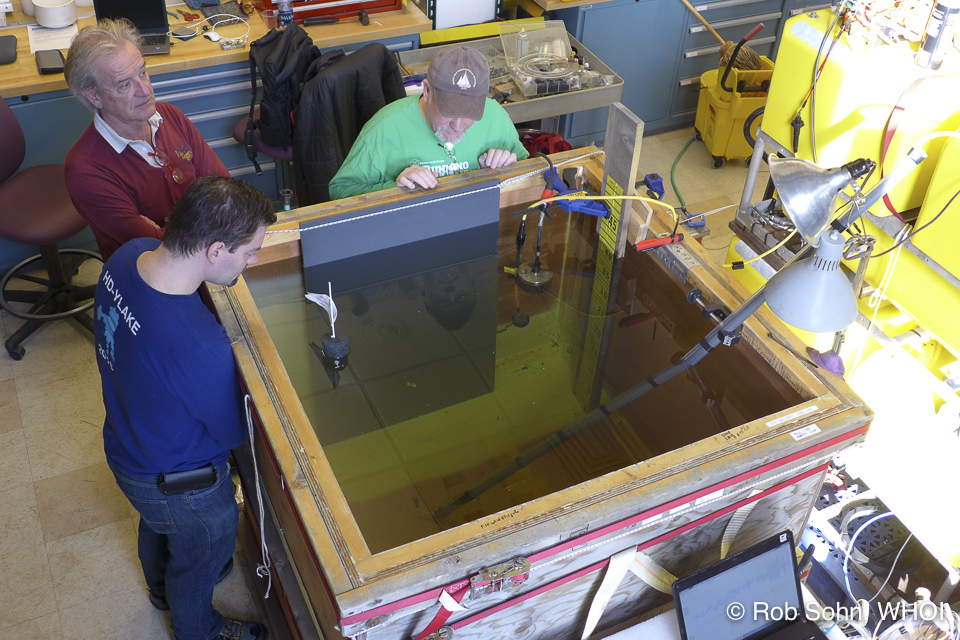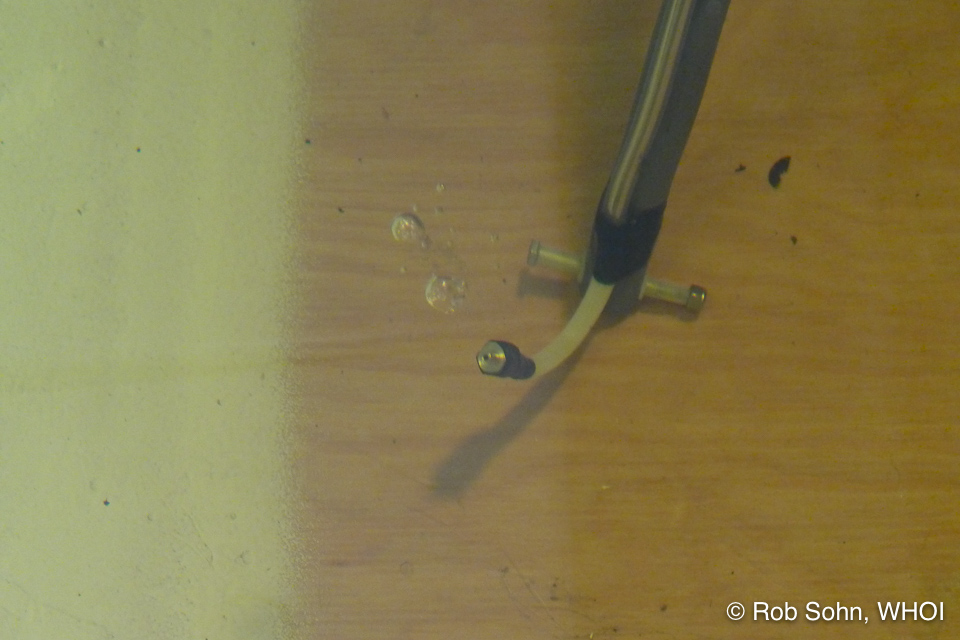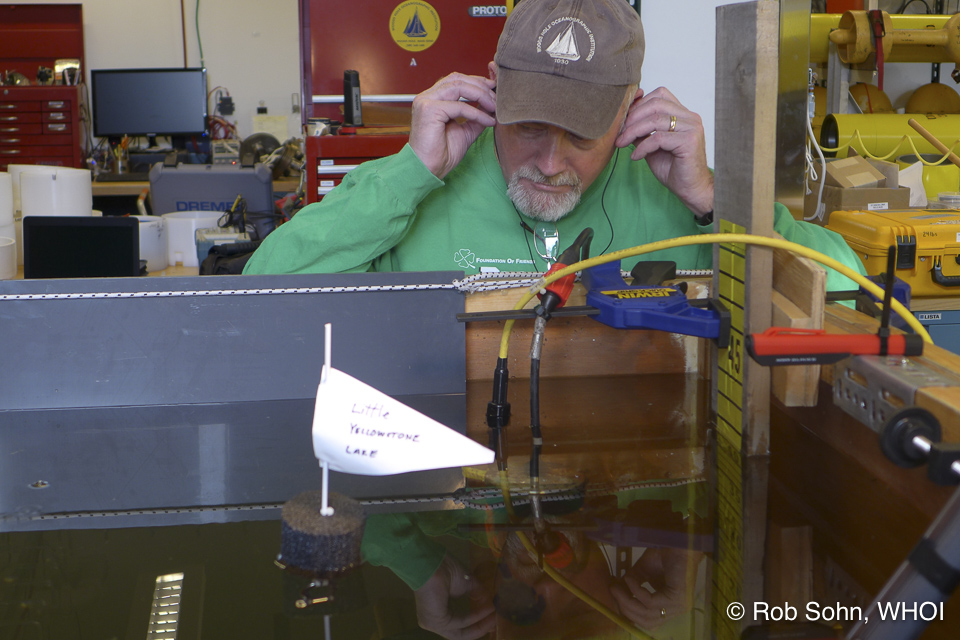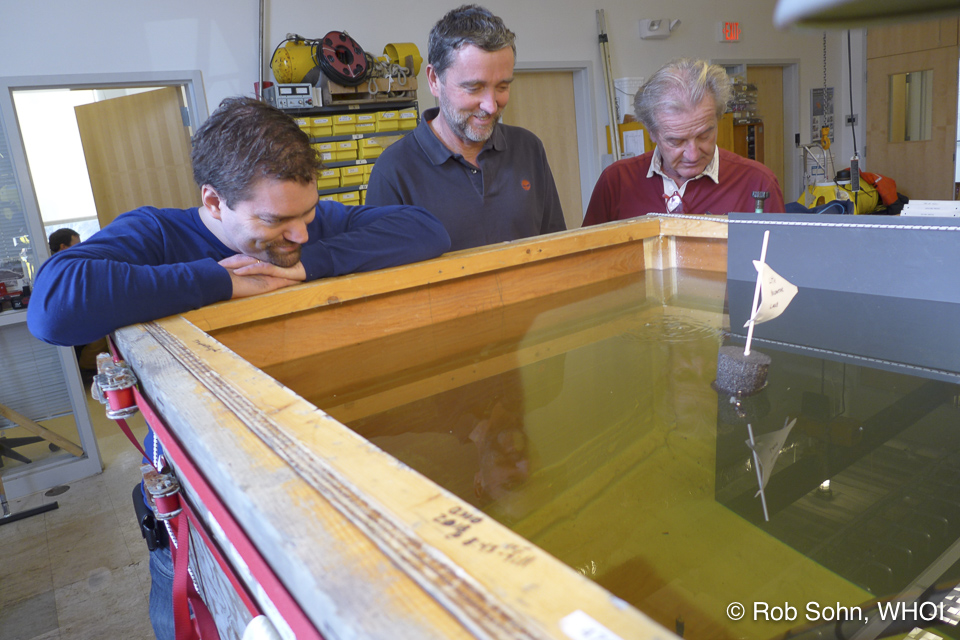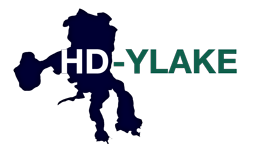The hydrothermal fluids venting from the lake floor contain gases that escaped from the magmatic system under the Park. These gases, which include things like carbon dioxide and sulphur dioxide, make bubbles that rise up through the lake before popping on the lake surface. On a calm morning it is easy to see them if you are on a boat right above the vent field. These bubbles are initially highly pressurized because they are under about 300 ft of water, and the bubble walls vibrate at rates of several thousand cycles per second. These vibrations are too fast to be detected by our seismometers, but we are building a custom hydrophone (underwater microphone) unit with collaborators from IS Terre in France that will allow us to monitor acoustic signals from bubbles during the seismometer deployments. We call this instrument, The Bubblephone. Photos and story by Rob Sohn, WHOI.
To test our Bubblephone, Tim Kane (green shirt) built a test tank that includes an apparatus to squirt an air bubble into the bottom of the tank to simulate gas bubbles in Yellowstone Lake. In the water beneath Tim's left hand you can see a hydrophone that senses the acoustic signal when the bubble is squirted into the water. The hydrophone signal then passes through an electronics 'magic box' designed by IS Terre engineer Jacques Grangeon (red shirt) that allows the seismometer to record the bubble signal level.
To control the bubble size we used an aquarium air diffuser (visible at the very end of the tube) that you can buy at any pet store. We like simple, inexpensive solutions to our instrumentation problems!
While the bubbles vibrate too quickly to be recorded by the seismometer, they are easy to hear with the human ear - they sound just like what you think they sound like! WHOI OBS engineer Tim Kane listens to bubbles rising up through Little Yellowstone Lake.
The team (from left to right, WHOI OBS engineer Alan Garden, IS Terre scientist Jean Vandemuelebrouck, IS Terre engineer Jacques Grangeon) is all smiles because the tests went very well. We ran tests where the Bubblephone recorded bubbles overnight and the data look good. We hope that the Bubblephone will help us understand how gas discharge rates change with time and in response to things like earthquakes and lake level during our experiment.
